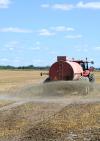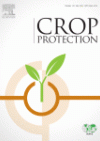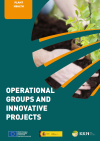Media library
Documentary, graphic and/or audiovisual knowledge objects are offered here, offering information on various sectors and topics. Use the keyword search or search filters to access current audiovisual and documentary knowledge objects useful for your implementation.
If you have any questions or suggestions, please contact us here.

Meetings of the Working Group on Experimentation in Viticulture and Oenology
Compilation of research on Viticulture and Oenology from the Working Group

Protection of grapevine pruning wounds against Phaeomoniella chlamydospora and Diplodia seriata using commercial biological and chemical methods
Article about Botryosphaeria dieback and esca, two of the most damaging grapevine trunk diseases (VTB) affecting vineyards in major grape-producing areas around the world.

Digital droplet PCR technology for the detection of Ilyonectria liriodendri in environmental samples of grapevines
Article about the accurate, early, and specific detection and quantification of blackleg fungi and the evaluation of droplet digital PCR and real-time PCR techniques.
Report A3: Map of stakeholders for climate change adaptation in the vineyard and wine sector
The overall objective of the VIN & ADAPT II project was to promote knowledge transfer and mobilize all stakeholders to drive adaptation to the challenges posed by climate change in the wine sector.
Effects and adaptation of the vineyard to climate change
Climate change is the other major uncertainty for the wine sector. Currently available climate projections indicate that if greenhouse gas emissions continue at their current rate, there could be rising temperatures and decreased rainfall in the Iberian Peninsula, along with an increase in extreme weather events such as droughts and heat waves.
Golden flavescence of grapevine and its vector Scaphoideus titanus Ball
Golden flavescence, in English “flavescence dorée of grapevine”, is a very serious and destructive disease that affects the vine. It is a disease of bacterial origin, being produced by the phytoplasma Candidatus Phytoplasma vitis, which needs to be transmitted by an almost specific vector called the vine cicada (Scaphoideus titanus Ball)
Fact sheet on Xilella fastidiosa
Who is Xilella, the fearsome plant killer?
Phytosanitary bulletin of notices and information
Pollinating insects are vitally important for the proper functioning of crops. Pollination is essential to ensuring the quantity and quality of crops and food production, directly linking wild ecosystems with agricultural production systems.
“Xylella fastidiosa Conference.” Diseases caused by Xylella fastidiosa and its status worldwide.
On February 12, 2019, a "Seminar on Xylella fastidiosa" was held in the Assembly Hall of the Ministry of Agriculture, Fisheries, and Food. This seminar is part of the measures adopted by the Ministry to disseminate information and raise awareness about the fight against and control of Xylella fastidiosa.
Control of powdery mildew in grapevines
Powdery mildew is a disease caused by an ectoparasitic fungus (Erysiphe necator) that overwinters in buds as mycelium, as well as in the shoots, leaves, and bark of vines, in these cases in the form of perithecae or cleistothecae. The fungus begins to develop at temperatures above 5°C and stops when temperatures exceed 35°C.
Disease Report Manual
Each report provides information regarding the 4 fungal diseases that affect vineyards: downy mildew, powdery mildew, botrytis and blackrot.
Poster on Xylella fastidiosa in the Balearic Islands
Xylella fastidiosa (Wells et al.) is a quarantine phytopathogenic bacterium that has a very wide range of host plants (more than 300 plant species), and can cause serious damage to the most important crops of the Balearic Islands, such as almond, vine, olive, citrus or fig trees, and to numerous species of ornamental plants (rosemary, lavender, polygala and acacia, among others).
Program of actions to transpose the National Contingency Plan for Xylella fastidiosa in the Autonomous Community of Extremadura
Xylella fastidiosa is a bacterium that causes rapid and widespread decline in plants. In the most severe cases, the leaves and branches may dry up and, ultimately, the entire plant may die. In many host species, the presence of the bacteria does not produce any symptoms, making detection extremely difficult. X.
Xylella fastidiosa contingency plan, national program for the implementation of phytosanitary regulations.
This document sets out the measures to be taken against the bacterium Xylella fastidiosa, a priority Union quarantine pest, with the aim of preventing its emergence and, if it does appear, acting quickly and effectively, determining its distribution and implementing eradication measures.
Popillia japonica (Newman) Contingency Plan
This document sets out the measures to be taken against the Popillia japonica (Newman) insect, a quarantine pest, with the aim of preventing its appearance, and if it does appear, acting quickly and effectively, determining its distribution and combating it in order to try to eradicate it and at all times prevent its spread.
Aleurocanthus spiniferus Contingency Plan (Quaintance)
This document sets out the measures to be taken against the quarantine pest Aleurocanthus spiniferus (Quaintance), with the aim of preventing its appearance and, if it does appear, acting quickly and effectively, determining its distribution and combating it in order to try to eradicate it and prevent its spread at all times.
Control of grapevine mildew
Vine downy mildew (Plasmopara viticola) is a disease caused by the endoparasitic fungus Plasmopara viticola. Under favorable environmental conditions, it can attack all green parts of the vine, causing severe damage and significant crop losses.
Contingency Plan for Golden Flavescence of the grapevine
This document sets out the measures to be taken against Flavescence dorée of grapevine (FD), a Union quarantine pest regulated by Regulation (EU) 2016/2031 and Regulation (EU) 2019/2072, with the aim of preventing its appearance, and, if it does appear, acting quickly and effectively, determining its distribution and combating it in order to prevent its spread and eradicate it.
Phytosanitary alert and information network, field protocol for crop monitoring: grapevine
Field manual for estimating the risk of damage caused by pests and diseases in grape cultivation.

Plant Health. Operational Groups And Innovative Project
English translation of a compilation of projects developed through regional and national Rural Development Programmes, operational groups and innovative projects that are working on agricultural plant health issues.



